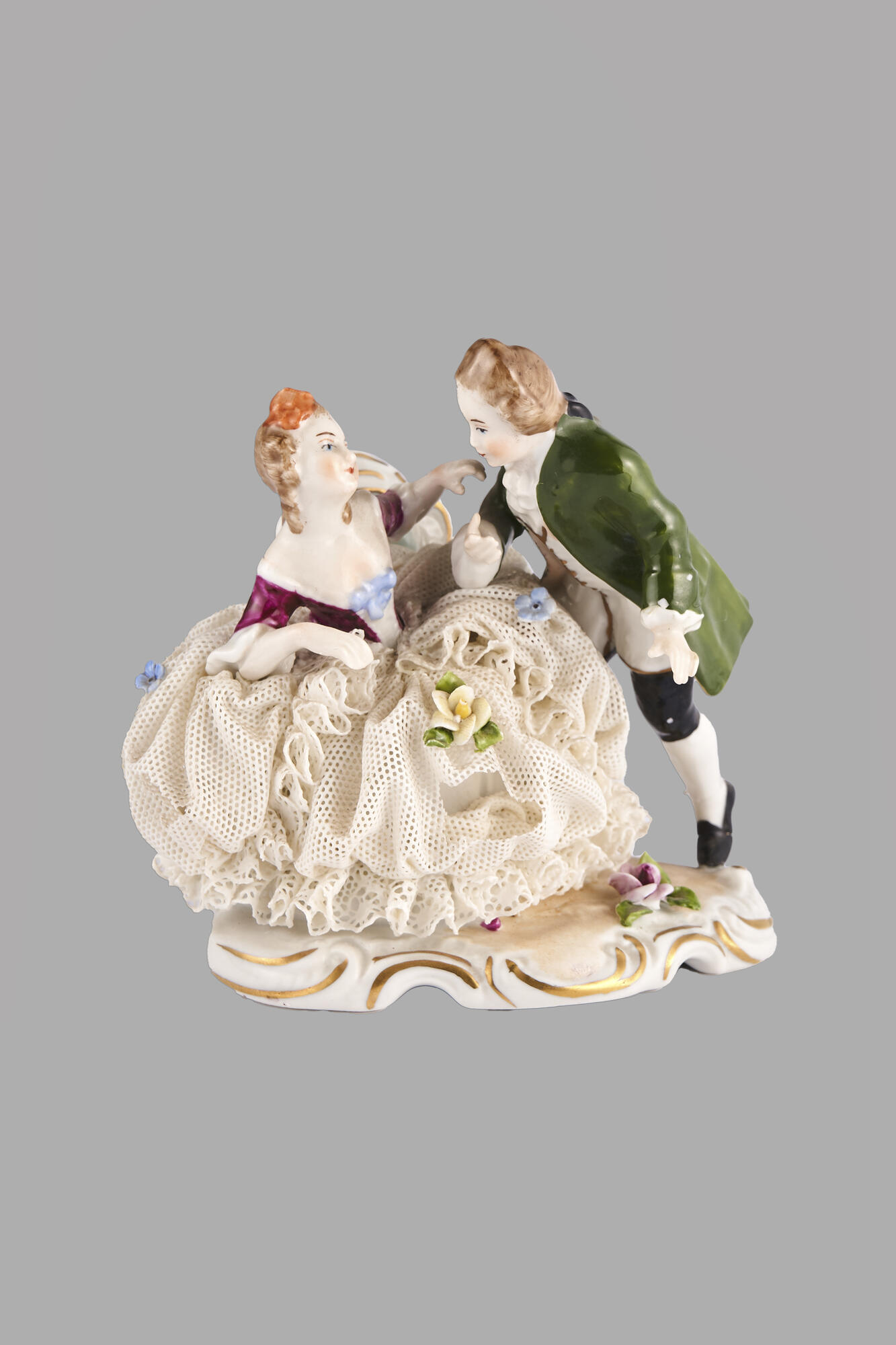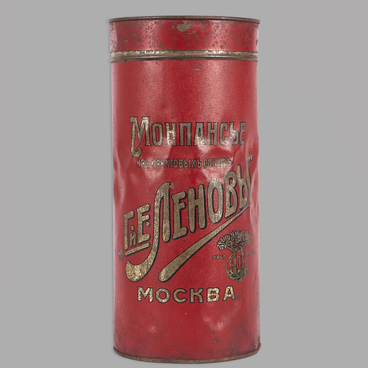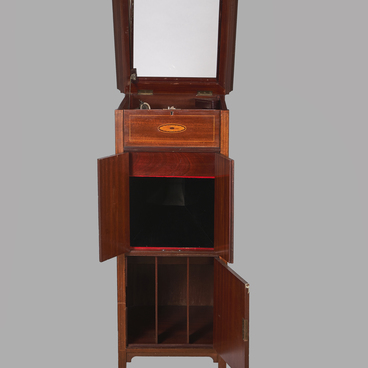Today, European porcelain has bypassed many of the Eastern brands with its design and forms. Its quality improves every year, and it becomes stronger and more beautiful. Porcelain items look brittle and can break if touched.
The products made of lace porcelain deserve special attention. Lace porcelain got its name due to its lightness and grace, as well as its resemblance to real lace.
Germany became the first European country to discover a recipe of clay mass for the manufacture of lace porcelain figurines. This mass had to be both strong and malleable. When creating such lace figurines, artisans used real lace, tulle or cotton weaving. Porcelain mass was applied to the base of the figurine (usually made of wood). The mass was not as liquid as the one that was poured into molds, but rather resembled thick sour cream. Special skill was required to create the folds of lace on the figurine’s skirt, collar, and sleeves. Then the figurines were fired in ovens — at a temperature of more than 1,300 degrees, the textiles burned out, and the porcelain lace hardened. The difficulty was as follows: if too much porcelain mass was used, the lace holes would be filled during firing and there would be no openwork lace. Applying too little mass would result in gaps.
The figurine, presented in the Novorossiysk Historical Museum-Reserve, entered the museum in January 1973. It was bought from Klavdia Semyonovna Chernykh for 30 rubles. Klavdia Semyonovna bought it in the port of Dalniy, where she lived from 1947 to 1951 and worked at the Chinese Institute of the Russian Language. The figurine is glazed. A lady in a dress with a fluffy white lace skirt sits on a high white chair. The lilac bodice has a white collar. There is a blue bow on the chest. On the head there is a reddish bow. A gentleman in a green coat, a white shirt with a bow, black tight-fitting trousers, white stockings and black shoes leans towards the lady. The base is white, though it is slightly yellow on top.
The products made of lace porcelain deserve special attention. Lace porcelain got its name due to its lightness and grace, as well as its resemblance to real lace.
Germany became the first European country to discover a recipe of clay mass for the manufacture of lace porcelain figurines. This mass had to be both strong and malleable. When creating such lace figurines, artisans used real lace, tulle or cotton weaving. Porcelain mass was applied to the base of the figurine (usually made of wood). The mass was not as liquid as the one that was poured into molds, but rather resembled thick sour cream. Special skill was required to create the folds of lace on the figurine’s skirt, collar, and sleeves. Then the figurines were fired in ovens — at a temperature of more than 1,300 degrees, the textiles burned out, and the porcelain lace hardened. The difficulty was as follows: if too much porcelain mass was used, the lace holes would be filled during firing and there would be no openwork lace. Applying too little mass would result in gaps.
The figurine, presented in the Novorossiysk Historical Museum-Reserve, entered the museum in January 1973. It was bought from Klavdia Semyonovna Chernykh for 30 rubles. Klavdia Semyonovna bought it in the port of Dalniy, where she lived from 1947 to 1951 and worked at the Chinese Institute of the Russian Language. The figurine is glazed. A lady in a dress with a fluffy white lace skirt sits on a high white chair. The lilac bodice has a white collar. There is a blue bow on the chest. On the head there is a reddish bow. A gentleman in a green coat, a white shirt with a bow, black tight-fitting trousers, white stockings and black shoes leans towards the lady. The base is white, though it is slightly yellow on top.


